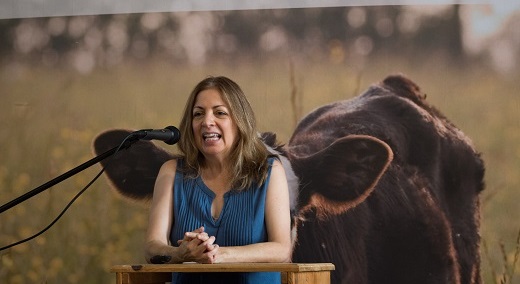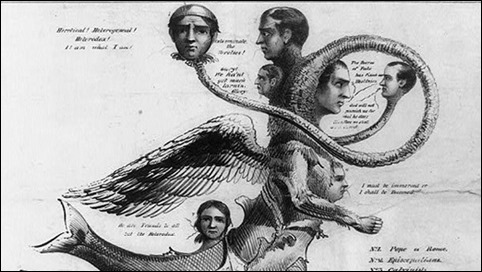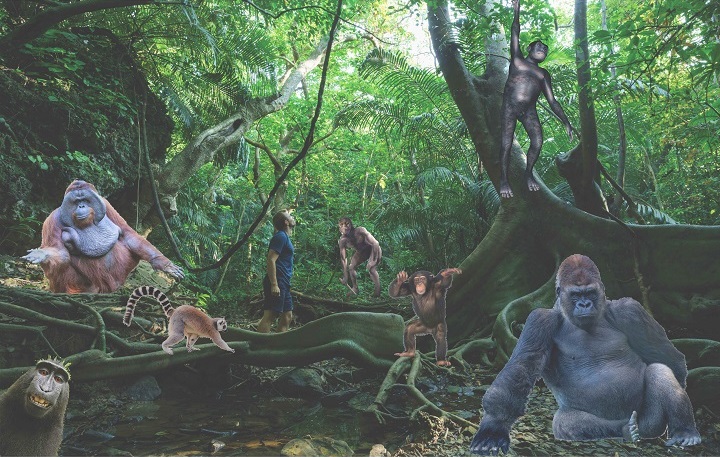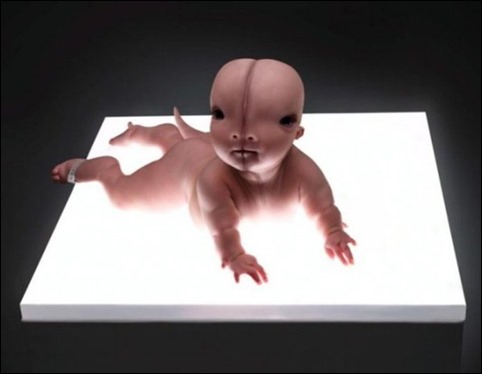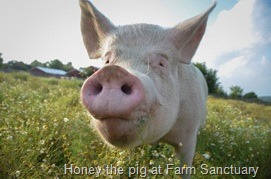Farm Sanctuary Hoe Down 2017
By Lori Marino
Last month, I joined hundreds of farmed animal advocates, other scientists, and caretakers at Farm Sanctuary in Watkins Glen, New York, for the annual weekend celebration of cows, pigs, chickens, goats, sheep, turkeys and other farmed animals.
There were presentations, discussion panels, meet-and-greets with human and nonhuman animals alike, evening entertainment, and lots of top-quality vegan food, all on the beautiful sanctuary grounds near the Finger Lakes region.
The goat who scoots around in a wheelchair, and turkeys who loved being tickled under their beaks.I kicked off the presentations with a talk on the Someone Project, a joint project between the Kimmela Center and Farm Sanctuary. The Someone Project publishes scientific evidence to demonstrate cognitive, emotional and social complexity in farmed animals. Our work includes peer-reviewed scientific papers for the academic community, along with accessible and engaging white papers to help people understand that these animals are “someone” not “something.”
In my talk, I shared some of our findings on pigs, chickens, and cows, like how pigs can use mirrors to find hidden food; roosters use deception to gain favor with their favorite hens; and cows jump for joy and have other positive emotional reactions when they realize they’ve completed a task successfully.
 Other speakers included Gene Baur, President of Farm Sanctuary, who gave his signature speech about the importance of kindness for all – humans and nonhumans alike.
Other speakers included Gene Baur, President of Farm Sanctuary, who gave his signature speech about the importance of kindness for all – humans and nonhumans alike.
Australian James Aspey gave a moving and witty talk about how a seven-day experiment in vegetarianism transformed him from being less-than-enthusiastic about animals to a global vegan activist.
And Timothy Pachirat, an assistant professor at U Mass Amherst discussed findings from his undercover fieldwork for nearly six months on the kill floor of an industrialized cattle slaughterhouse in Nebraska and how “big ag” is fighting back against veganism with a range of surprising PR efforts.
During the afternoon that we spent visiting with the nonhuman residents of Farm Sanctuary, I was especially honored to meet Benedict, the goat who scoots around in a wheelchair, turkeys who loved being tickled under their beaks, and some of the most affectionate sheep I have ever met.
What’s on the horizon for the Someone Project? Look for a scientific paper on cow psychology in Animal Behavior and Cognition in November and new reviews of sheep and goat intelligence, emotions, and personality over the next few months.

